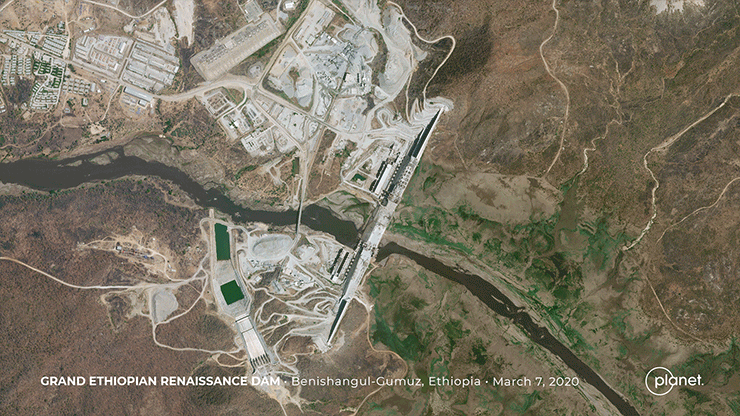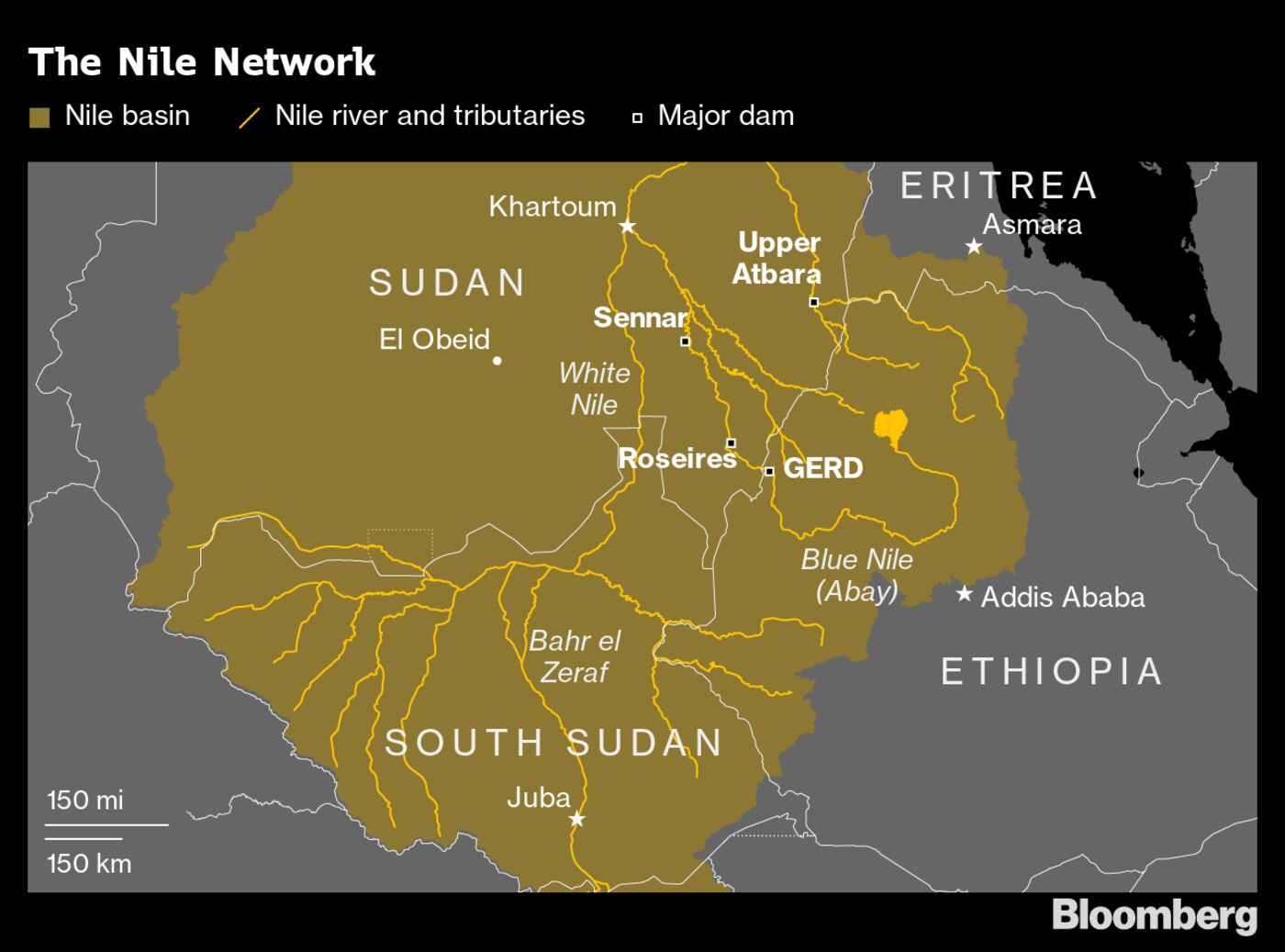Satellite images of Africa’s biggest hydropower project show a reservoir flooding with water from heavy rainfall in recent weeks, adding to tensions that risk spilling into open conflict. The photos from Planet Labs Inc. show runoff from rains collected in front of the Grand Ethiopian Renaissance Dam after negotiations over water management broke down with Egypt and Sudan, two downstream countries that rely on Nile River irrigation. The government in Addis Ababa said the images don’t indicate any formal decision to begin filling the reservoir, an effort that will take more than a decade to complete.

Egypt has said it wants further negotiations to address its concerns. The dam is the world’s seventh-largest. It will supply Ethiopia, which is east Africa’s second-biggest economy, with the power equivalent to six nuclear reactors once its turbines begin churning. The $5 billion megaprojects, partly financed by China, is being built to feed power demand in Ethiopia’s 110 million-person economy.
“From the climate side, there is evidence to believe that the dam is impounding water during the Monsoon and possibly due to heavy rainfall events over the region,” said Yoshihide Wada, a water-security researcher at the International Institute for Applied Systems Analysis outside of Vienna.

This isn’t the first time that waters abutting the project have risen. In October, European Space Agency satellite images show similar flooding that raised levels. Tensions around that time triggered meetings between Ethiopian Prime Minister Abiy Ahmed and Egyptian President Abdel-Fattah El-Sisi on the sidelines of a Russia-Africa summit.
However, the speed at which water is accumulating this month indicates that “weather events alone” may not sufficiently explain what is happening, according to Jida Wang, a scientist who tracks changes in global water levels for the U.S. National Aeronautics and Space Administration.
“The scale and speed of this observed water extent expansion resemble those of the initial filling of the Three Gorges Dam,” he wrote in an email, referring to the Chinese dam with the world’s largest installed hydro-electric capacity. “It makes sense that the initial reservoir impoundment was planned to happen concurrently with the rainy season.”
The conflicting reports and sporadic responses by the governments show just how sensitive the issue is, with authorities walking a tight rope between asserting rights and exercising restraint. In the 1970s, Egypt’s then-leader Anwar Sadat threatened war if the dam was built. Today’s government, though, has been far less belligerent and has pledged to resolve the dispute diplomatically.
Sudan’s Foreign Ministry said Thursday it had received assurances from Ethiopia that it had not begun to fill the dam.

